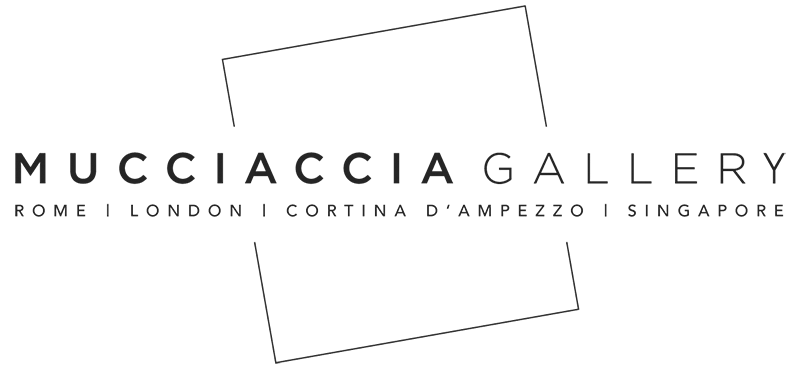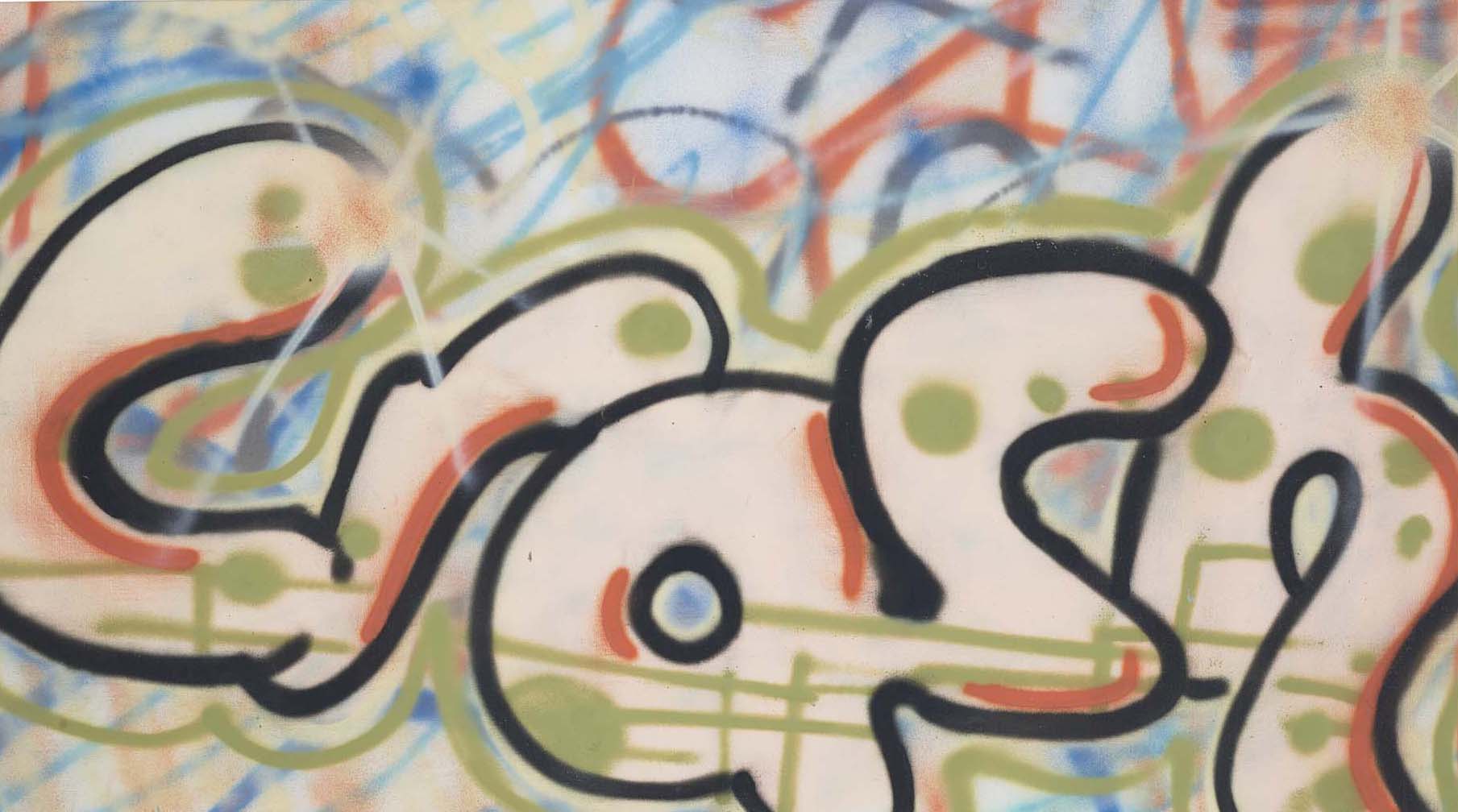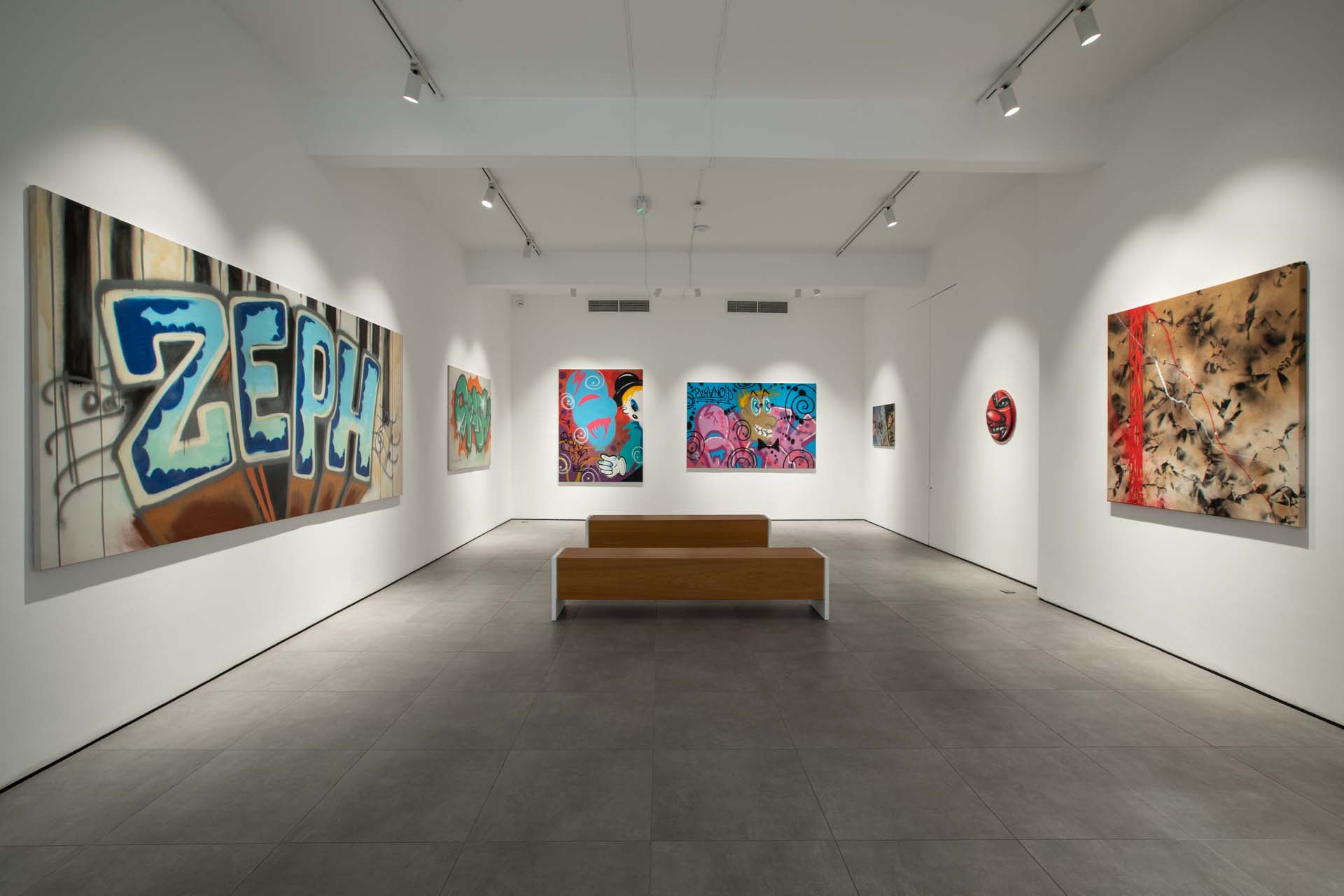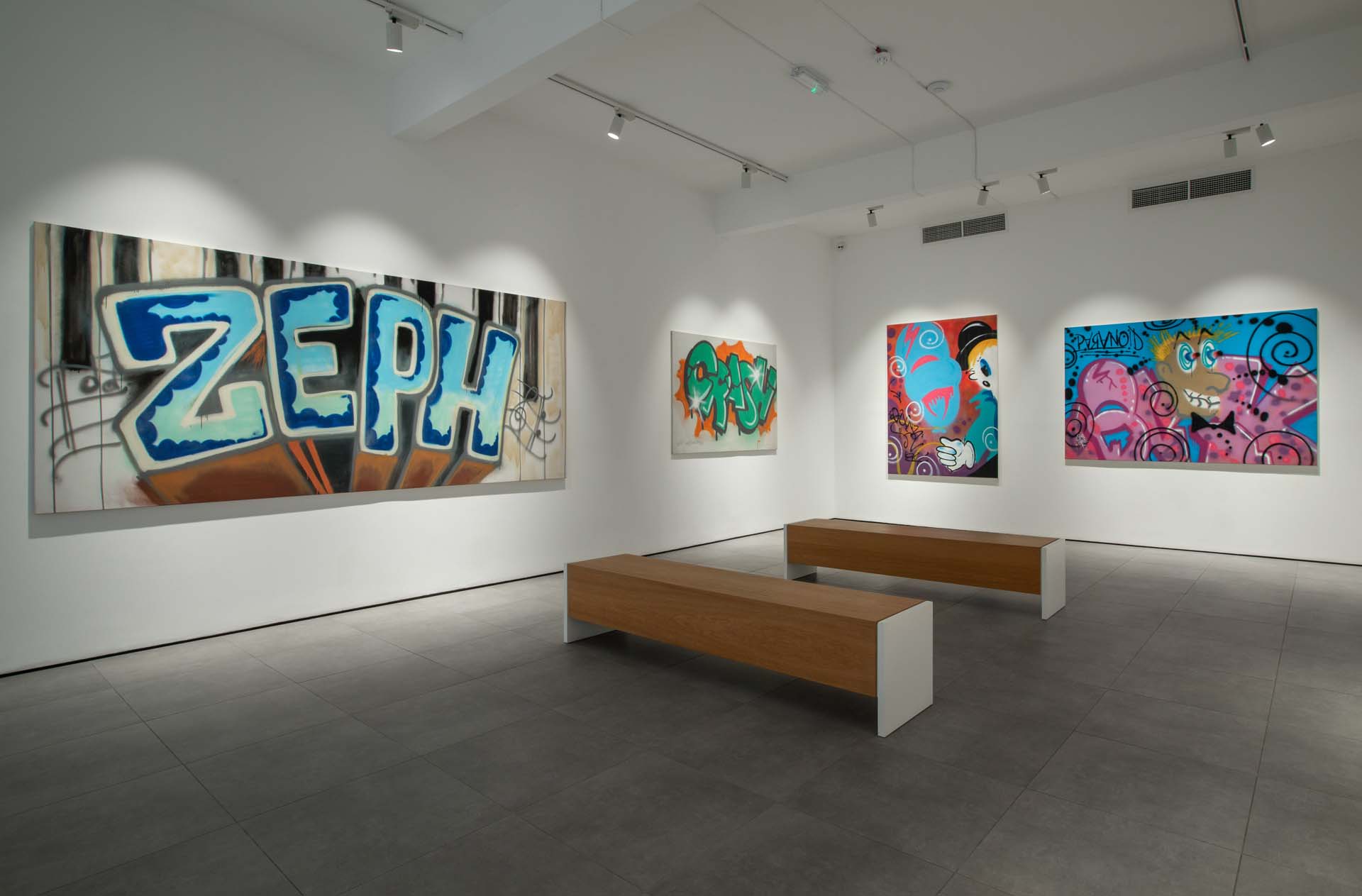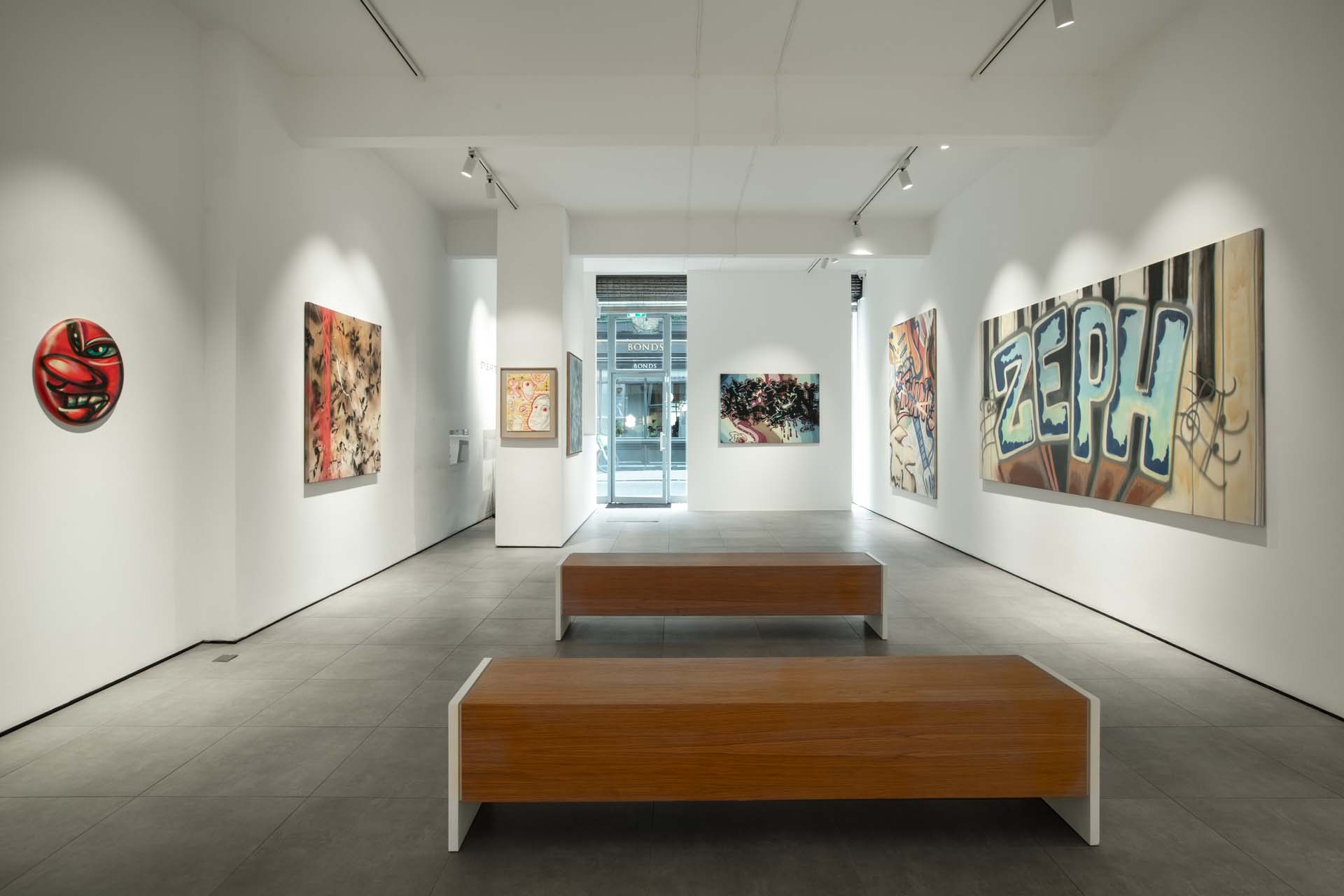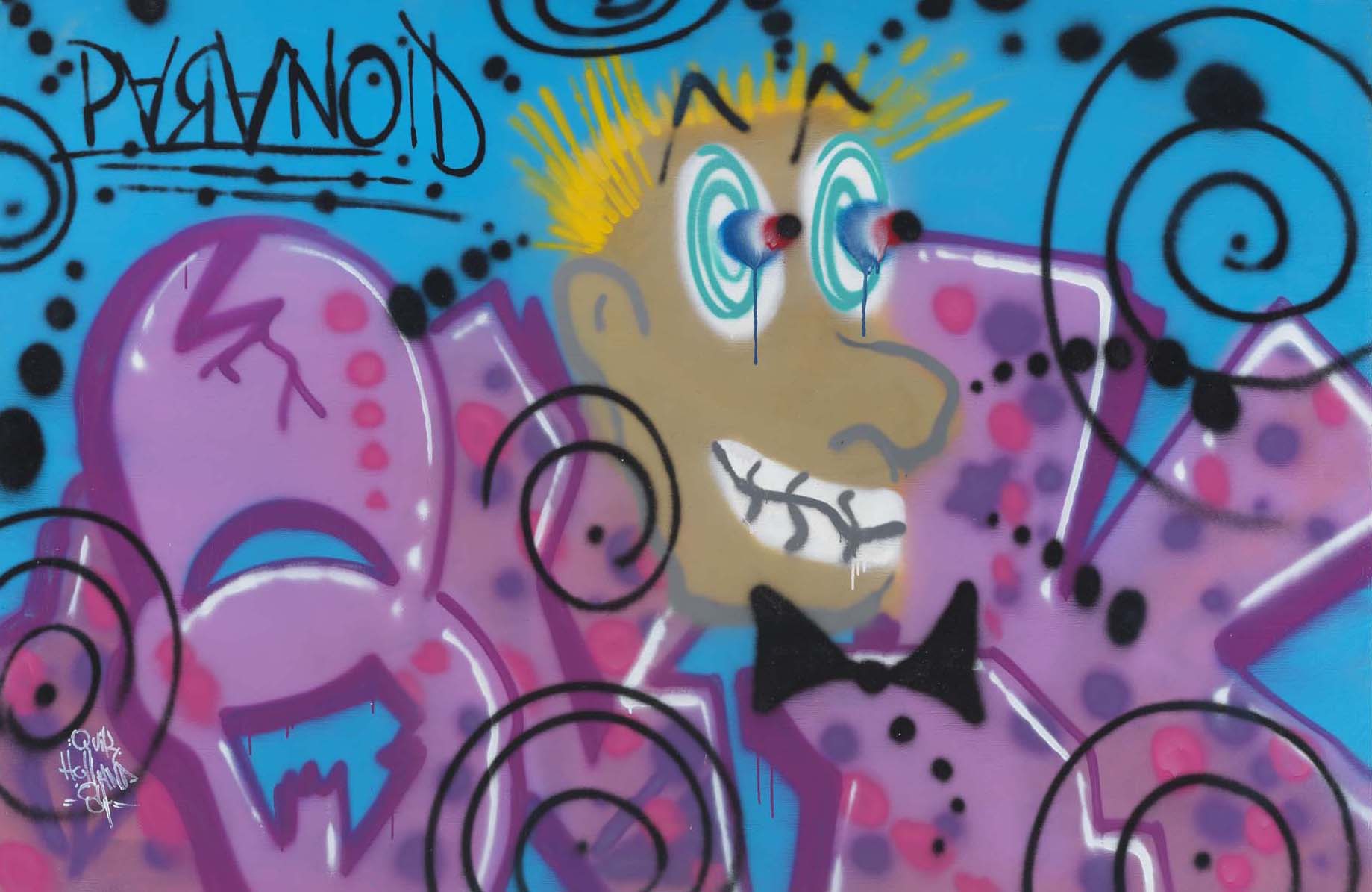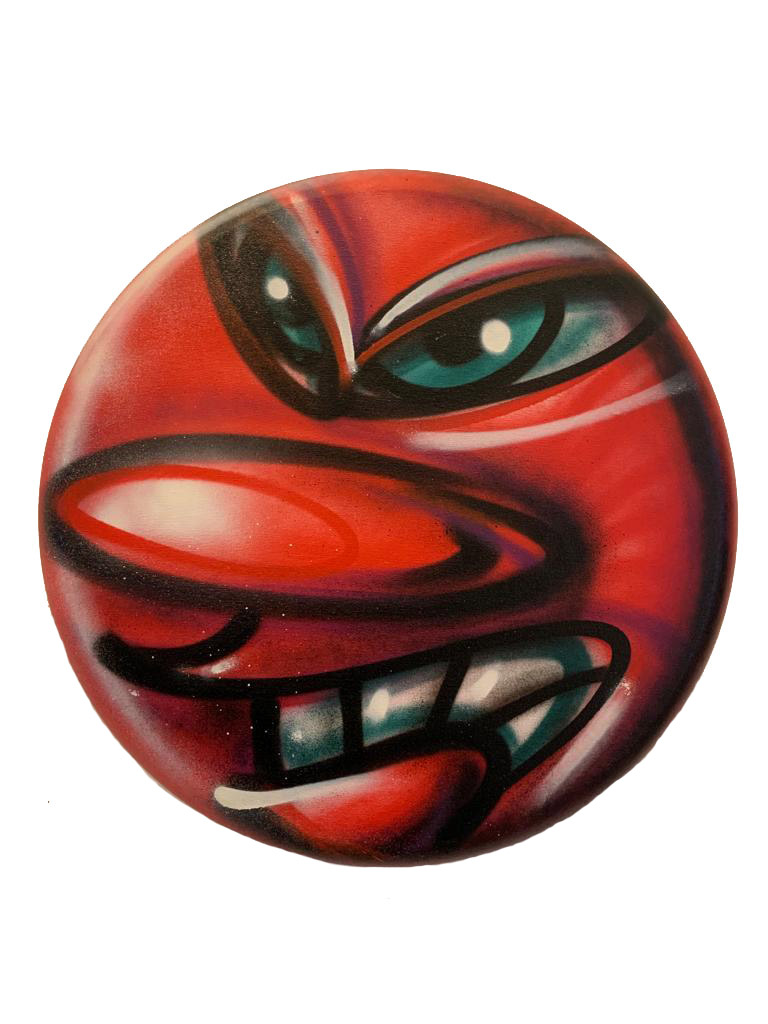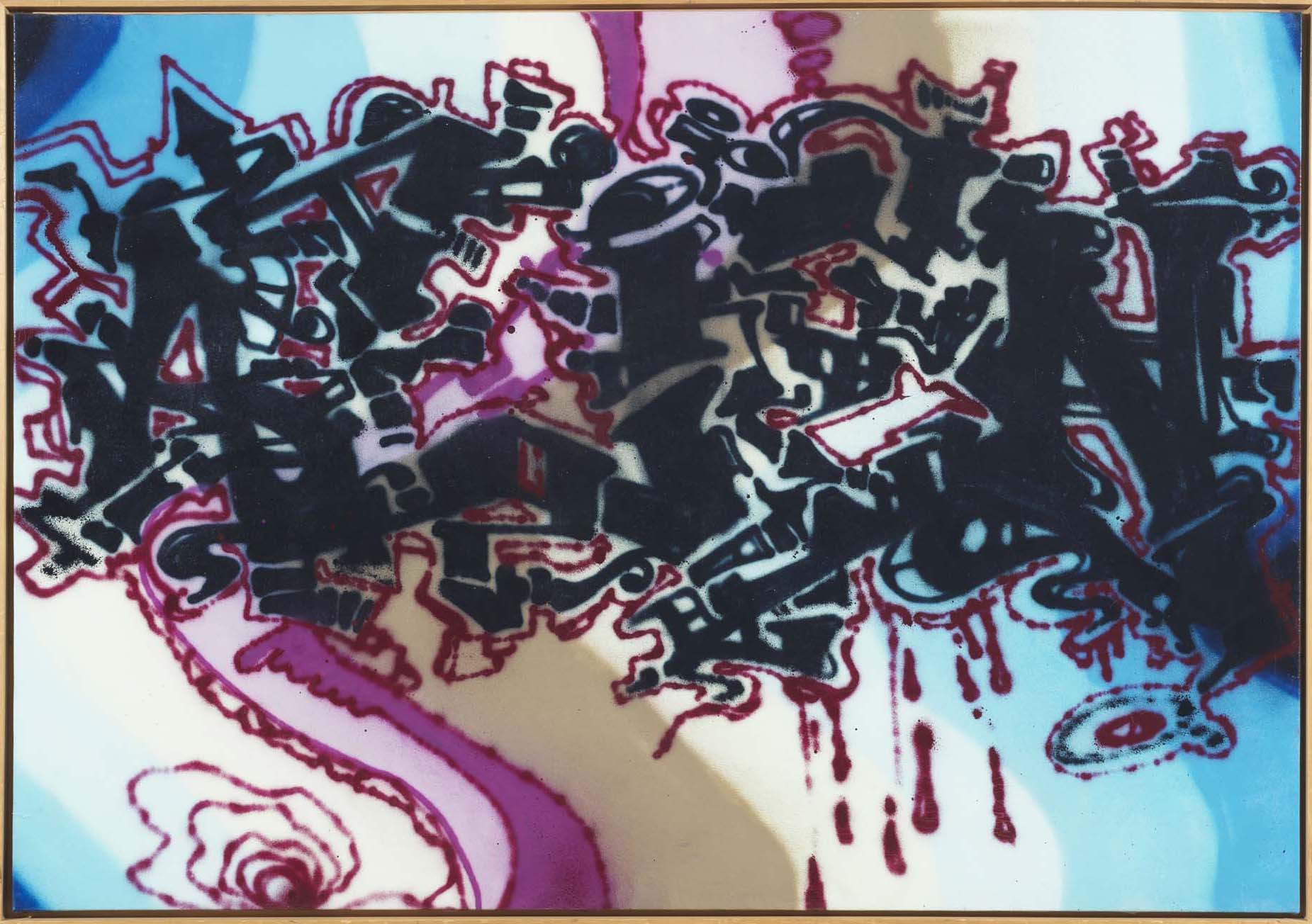STYLE WRITERS
Aaron Noble, A-One, Crash, Futura 2000, Kenny Scharf, Quik, Zephyr
LONDON | MUCCIACCIA GALLERY
1 March – 29 April 2023
Mucciaccia Gallery London is pleased to announce: “Style Writers” featuring Aaron Noble, A-One, Crash, Futura 2000, Kenny Scharf, Quik and Zephyr.
The first exhibition of graffiti in a gallery—“Graffiti Art Success for America”—was organized by the writer Crash at a gallery called Fashion Moda in South Bronx, New York in 1980. This was the moment when graffiti was recognized as a form of self-expression instead of an act of vandalism. In the Bronx, at the same time, hip hop came to be appreciated as a form of music, DJs made their first scratches, and break dancing came indoors, from the street to the studio. The distance between these now discreet art forms is an illusion of distance because, when they emerged, they came into existence as intersecting forms of street culture. This was not Pop Art, with its ironic distance and sly commentary on American media-fascination and conformism. This was popular culture and it was nurtured by young people of diverse backgrounds coming together on and off the street. Grandmaster Flash, Fab 5 Freddy, Rock Steady Crew, the Beastie Boys, Futura2000, Afrika Bambaattaa, Lady Pink, D.ST, Muhamad, Lee Quinones, The Magnificent Force, Mr. Magic, Ray “Lil Lep” Ramos, Run DMC, DJ Jazzy J, Zephyr, Beat Street, the list goes on.
These artists, musicians and performers generated these interlocking art forms against the background of a crumbling post-industrial New York City. Though the city was the center of finance, and housed the most significant banking sector in the world, it had gone broke in 1975 and the national government refused federal assistance. If New York over-blossomed with capital in the 1950s and 1960s, by the late 70s, it had gone to seed. No matter, other forms of value were being discovered in the neglected boroughs. The shared destiny of the out-of-work-ing class allowed them to explore their collective capacity. From the marginal spaces of the South Bronx, and the other buroughs—abandoned movie theaters, community centers and, most of all, the “yards” where subway cars were parked—new forms of art came to life. These informal, and sometimes illegal, cultural practices spilled out into the streets in a series of radical experiments, a breathless lunge at glory. In this world, the only valuables in sight were those generated by your exceptional style, your capacity to outperform everyone else in the room, or in the yards. The results could not be quantified, at least not yet, but the burst of creativity that emerged in this twilight of the greatest city of the 20th century overflowed its bounds, transforming global culture and providing a whole new set of standards by which to judge the creative capacity of the artist. Style was the term they used to describe the ineffable excellence they strived for—style defined the way they made a contribution to their world when hardly anyone besides themselves was paying attention at first.
“Writers” is the moniker they used for the kids who made graffiti because they did not think of themselves as making pictures but bringing words to life, most importantly on the sides of subway trains. A great writer could use a whole car to write his “tag” with a unique style, many of which are being copied to this day. Artists like Zephyr, Crash and Futura2000 made and remade their tags on trains, in cars, on buildings, any space that could be claimed in the burned-out city of their youth. This changed with the exhibition organized by Crash at Fashion Moda. The idea was to get writers to cover recycled plywood panels and display those throughout the gallery. The walls of Fashion Moda were already covered with graffiti, but these new wood pieces could be carried away, which means they could be sold and, just like that, writers became artists, and they found a new means of supporting their work.
This new development shifted downtown, to the East Village, where the Fun gallery was founded by Patti Astor and Bill Stelling in 1981. The first show there was for Kenny Scharf, a graffiti writer transplant from LA. Scharf, like his friend Keith Haring, was an art student in NYC who had developed his own style by studying the works of writers around the city. He named the gallery. As Patti Astor tells it: “Our gallery was going to be an artists’ gallery as opposed to the moneyed enclaves to the south in Soho, so I decided that each artist should give their name to our as yet un-named space. Kenny Scharf came up with the ‘Fun Gallery’ and it was so stupid we let it stick.” The next show was given to Fab 5 Freddy, the artist/rapper/emcee who was one of the key figures in connecting the scenes in the South Bronx and the East Village, where Haring and Jean-Michel Basquiat were already at work. A-One was also part of the traffic between Bronx and the East Village; he joined Rammellzee’s crew, Tag Master Killers, and befriended Basquiat around this time.
Many of the works in “Style Writers” come from these early days. Works by Crash, Zephyr and Quik from the 80’s are classic examples of writers from the South Bronx doing their tags on canvas. By 1983, when some of these pieces were made, Lisson Gallery was already showing graffiti art in London and, by 1984, French national television had started a show called H.I.P.H.O.P. The arts of the South Bronx spread rapidly throughout the world and these works are part of that story. This exhibition also demonstrates the evolution of these artists’ vision once they moved over to canvas. Works by Kenny Scharf, A-One and Futura2000 represent these artists exploring emotional states—like Quik’s Paranoid (1984) or A-One’s Untitled (Alone) (1991)—or abstraction, as in Scharf’s Wacko Picasso (1984) or Futura2000’s three paintings in the show. Also included here is Aaron Noble, a West Coast muralist and writer who absorbed these traditions from a distance and generated funky, Dali-esque images that are both abstract and figurative.
Many of these writers have moved onto artistic stardom and have achieved the status of legends. The 2006 exhibition Graffiti at the Brooklyn Museum brought the movement into the museum and Tate Modern hosted Street Art in 2008. The 2011 exhibition Art in the Streets, organized by one of the movement’s longtime supporters, Jeffrey Deitch, showed at the Museum of Contemporary Art, Los Angeles. Currently there are multiple museums of graffiti and street art in New York, Miami, Berlin, and Amsterdam among others. In addition, there are cultural festivals for graffiti and street art happening around the world. The hip-hop style born in New York in the late-70’s and early-80s has become a universal symbol of youth culture emulated in all corners of the globe.
Text by John Zarobell
The exhibition will run from Wednesday, March 1 to Saturday, April 29 2023. Opening hours: Monday to Saturday 10am to 6pm.
For further information please contact: london@mucciaccia.com
INFO:
Exhibition: STYLE WRITERS
Location: Mucciaccia Gallery, 21 Dering Street – W1S 1AL London
Dates: 1 March – 29 April 2023
Opening hours: Monday – Saturday, 10am – 6pm; Sunday closed
Free entry. T. + 44 20 3302 3440 | london@mucciaccia.com | www.mucciaccia.com
INSTALLATION VIEWS
WORKS
PUBLICATIONS
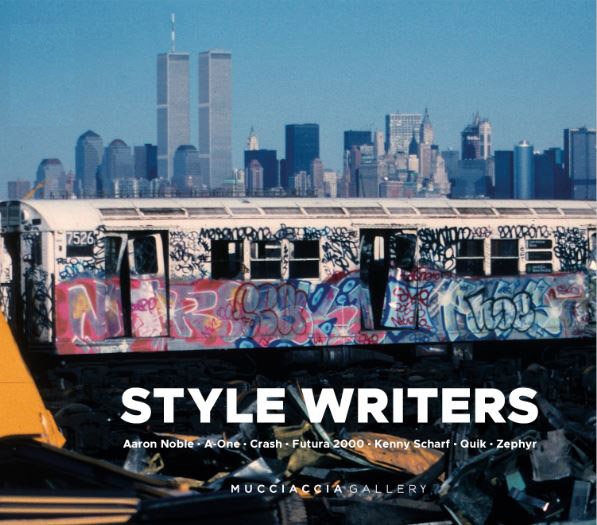
Address
MUCCIACCIA GALLERY | LONDON
21 Dering Street
London W1S 1AL
Tel. +44 20 3302 3440
london@mucciaccia.com
Opening Hours
Monday – Saturday: 10am – 6pm
Sunday closed
